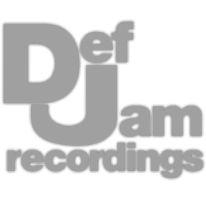Professional Analog Mastering.
Professional Analog Mastering.










1. Pro R by FabFilter
2. Satin by u-he
3. Ozone Izotope
In terms of flexibility, unique functionality, and overall quality of the sound, this is probably the best reverb plugin available at the moment. By extension, this makes it one of if not the best vocal reverb plugins out there - making it a fantastic choice if you want to add reverb to your vocals.
In the typical Fabfilter style, the design is easy to understand and intuitive; however, there’s a lot going on behind the scenes.
In the main window, the yellow is the EQ of the reverb, and the blue is frequency-specific delay time - a feature that isn’t available in any other reverb plugin at the moment. This allows you to control both the overall frequency of your reverb and the time of the reverb as it relates to specific frequencies.
Character lets you change the reverb from realistic, to more modulated, until you’ve almost reached a chorus-like effect.
For the distance function, imagine the vocalist is somewhere in a room and the microphone is picking up both the vocals and the room reflections. For close, the microphone is a foot away from the singer; for far the microphone is as far away from the singer as the room allows.
Space is another unique function, in which you can fluidly alter both the reverb time and the emulated space. This ranges from a small room to a cathedral, to completely unreal and ethereal timing. Notice how the RT60 corresponds with the decay rate, giving your vocal reverb time a potential range of 100ms to 20 seconds.
Another unique setting is the stereo image dial, with which you can make the vocal’s reverb reflections mono, completely stereo, or a combination of the 2.
The mix dial is your wet/dry, but click the lock icon keeps that ratio in place when you cycle through the various presets.
Speaking of the presets, there are a lot, and many sound absolutely fantastic on vocals.
One of my personal favorites is vocal to mix glue, which blends the vocal in seamlessly with the track.
One more cool feature is the predelay at the bottom, which can be freeform or be synced to the BPM from 1/4 to 1/32 notes.
Let’s take an extended listen to this plugin on vocals and consider how the various settings and presets drastically affect the sound.
This tape emulation plugin has a lot to offer when mixing vocals - it can be used for compression and saturation of course, but it’s surprisingly useful as an EQ, exciter, clipper, tape delay, tape emulated reverb, flanger, and modulator, as well as a general tape emulator.
Let’s start with the studio mode and open up the service tab at the bottom. Now we can see how various functions will affect our frequency response.
So let’s start by driving the input with make-up gain enabled. This will begin to cause saturation and compression the higher the level and adjust the frequency response as well. If we switch to vintage tape, our vocal will become saturated are lower levels, and the EQ will drastically change.
With our saturation figured out, we can affect the tape speed and pre-emphasis to both control saturation more and alter the response. Or if we just want the preamp emulation of the plugin we can bypass the tape.
The compander gives you the ability to excite your vocal. The encoder-decoder on tape machines was used to increase the high end to mask noise and then reduce it to balance the signal, but if we enable an encoder type, and leave the decoder set to none, we can mix in this high-end resulting in crisp vocals.
At the bottom are noise generators, asperity which can make your vocal sound wider even if it’s mono, crosstalk which can also cause stereo expansion, and bias which affects the response of the tape.
Additional functions can be used to affect the eq of the signal, but let’s move on to temporal effects.
Under mode let's select Delay and notice that we now have 2 delay taps. On each, we can affect the modulation and emulated orientation of the tape has. On the right, feedback can be increased and a limiter for the feedback can be used to protect our ears and equipment.
We can also use 4 tape heads to make reverb emulation possible, and adjust the distances of our heads to dial in this reverb’s overall sound.
In the flanger section, we adjust phase cancellation to create the effect. The In and Out section determines the time relationship between the 2 signals and in turn the rate of modulation. We can control the relationship between the 2 by dragging the slider, with the middle typically causing the most cancellation.
The shape of the fade in or out can be altered between exponential, linear, and logarithmic to create different cancellations and in turn flanging effects.
Lastly, if we look at the presets, we get a good idea of how many vocal applications this plugin has. From creative to more typical dynamic control, this plugin is incredibly versatile and useful once you get a good grasp of all of its features.
Last up let’s talk about a series of mastering plugins that I think make a great vocal chain. I often find that mastering equipment is some of the best in terms of quality and can be used on individual instruments with a lot of success.
First, I’m going to use the dynamic EQ. This will attenuate aspects of the vocal I want to cut out - and can double as a de-esser by setting a dynamic band above the sibilance.
Next, I’m going to use the vintage compressor. I keep it on balanced for now but attenuate the high end from triggering the compression to keep the vocal crisp. I’ll use a quick attack, keep the release at 50ms, and leave auto gain on.
Next, I’ll use some vintage tape to control the response a little but mainly to alter the timbre and add some harmonics. Like the Satin tape plugin, we can compress by driving the input and adjusting the bias.
Next, I’ll insert the Exciter and create 3 bands - making it easy to introduce frequency-specific distortion that alters the timbre of the vocal in a beneficial way. I’ll use the warm setting on the mids, tape on the highs, and keep triode for the lows. Then I’ll blend this in. Also, I’ll enable oversampling to avoid aliasing since I’m distorting the highs.
Last up I’ll use a vintage EQ to subtly adjust the overall response, maybe add some air or a little mids depending on how the vocal is sounding so far.
So, although Izotope ozone is marketed and designed as a mastering module, it can be used as a vocal chain and give you an amazing amount of control over the timbre and dynamics of your vocal.
Let’s listen to this chain with some small adjustments added in here and there.